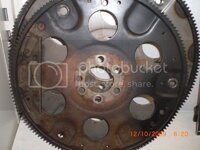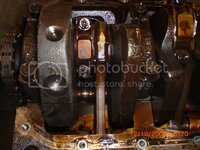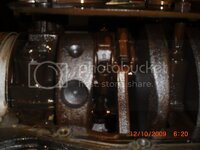Are you using the stock rotating assembly ?
I'm wondering why you don't just look at the old flexplate or flywheel that came off that engine to see if it's internally or externally balanced - or did you get just the engine (no flexplate/flywheel) ??
If your rotating assembly is externally balanced and you don't have the flexplate or flywheel that was used to balance the assembly how can you possibly know where to add weights or drill holes to reduce weight/mass without removing the rotating assembly and have it balanced ??
Remove the oil pan. If the crank counterweight at the rear of the engine has holes drilled into it then it's a good indication it's internally balanced and the flexplate (flywheel) is neutral. It is still possible that the rotating assembly was so out of whack that it needed holes in the crank and in the flywheel or flexplate but I don't think it's very likely.... then again, anything is possible....:ill:



